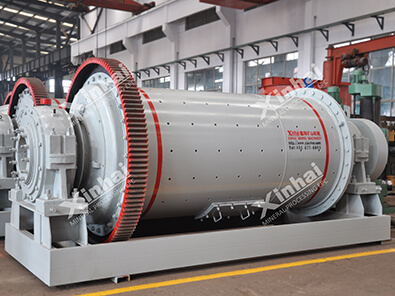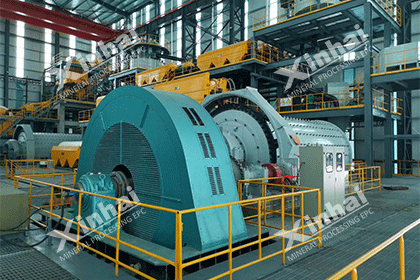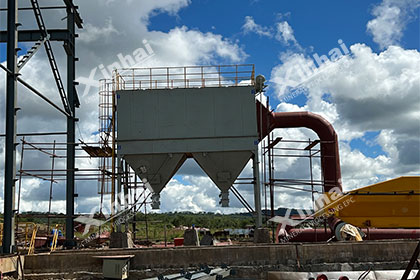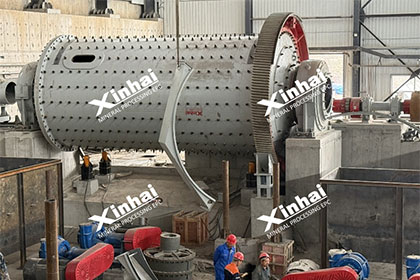Maximizing Ball Mill Performance: A Comprehensive Guide to Effective Maintenance
 Essow
Essow
 Jun 15, 2023
Jun 15, 2023
 4328
4328
If you want to know more details about equipment, solutions, etc, please click the button below for free consultation, or leave your requirements!
The ball mill is a reliable and effective tool that is used for grinding different materials. It is widely used in various industries, such as mining, cement, metallurgy, chemical, and others. The ball mill is a critical piece of equipment that requires regular maintenance and repair to ensure that it performs at its best. Neglecting maintenance tasks can lead to costly repairs and downtime, which can negatively impact production schedules and profits.
This article will discuss the importance of ball mill maintenance, the types of maintenance tasks that are required, and how to perform them correctly.
01 Importance of Ball Mill Maintenance
BackThe ball mill is a heavy-duty piece of equipment that operates under extreme conditions. It is exposed to abrasive materials, high temperatures, and heavy loads. Therefore, regular maintenance is essential for the ball mill to function at its best. Here are some of the reasons why ball mill maintenance is important:
1. Prevents Breakdowns
Regular maintenance tasks, such as lubrication, alignment, and inspection, can help identify potential problems before they lead to breakdowns. This can help prevent expensive repairs and downtime.
2. Improves Performance
Regular maintenance can help improve the performance of the ball mill. For example, proper lubrication can reduce friction and wear, which can improve efficiency and reduce energy consumption.
3. Increases Longevity
Regular maintenance can help extend the life of the ball mill. By identifying and addressing minor issues before they become major problems, you can prevent premature wear and tear that can shorten the lifespan of the equipment.
4. Ensures Safety
Proper maintenance can help ensure the safety of workers who operate and maintain the ball mill. By identifying and addressing potential safety hazards, you can prevent accidents and injuries.
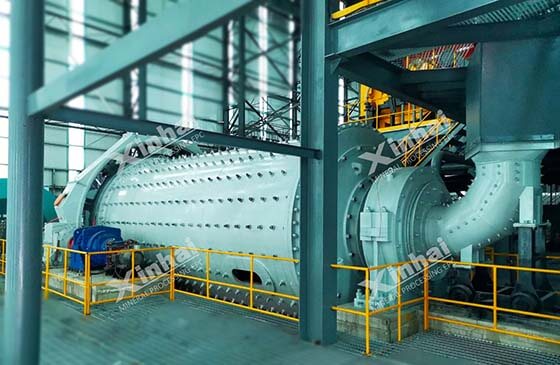
(Ball Mill in An Iron Processing Plant)
02 Types of Ball Mill Maintenance
BackThere are several types of ball mill maintenance that are required to keep the equipment running smoothly and efficiently. These maintenance tasks can be divided into two categories: preventive maintenance and reactive maintenance.
1. Preventive Maintenance
Preventive maintenance involves performing regular maintenance tasks to prevent equipment breakdowns and ensure optimal performance. Here are some of the preventive maintenance tasks that are required for ball mills:
a. Lubrication
Ball mills have a lot of moving parts that require proper lubrication to function at their best. Lubrication helps reduce friction and wear on bearings, gears, and other components. The lubrication schedule will depend on the type of lubricant used and the manufacturer's recommendations.
b. Inspection
Regular inspections of the ball mill can help identify potential problems before they lead to breakdowns. Inspections should include checking the gear teeth, bearings, and other components for signs of wear and tear. Inspection should be performed at regular intervals, such as weekly, monthly, or quarterly.
c. Alignment
Proper alignment is essential for the ball mill to function at its best. Misaligned components can cause excessive wear and tear, reduce efficiency, and lead to premature failure. Alignment should be checked at regular intervals, such as annually or biannually.
d. Cleaning
Ball mills can become clogged with material over time, which can reduce efficiency and cause damage. Regular cleaning can help prevent clogging and keep the equipment running smoothly. Cleaning should be performed at regular intervals, such as weekly or monthly.
2. Reactive Maintenance
Reactive maintenance involves performing repairs and maintenance tasks after a breakdown occurs. While it is best to prevent breakdowns through preventive maintenance, reactive maintenance is sometimes necessary. Here are some of the reactive maintenance tasks that are required for ball mills:
a. Repair
If a component of the ball mill fails, it will need to be repaired or replaced. This can include replacing bearings, gears, motors, and other components that have failed. Repairs should be performed as soon as possible to prevent further damage to the equipment.
b. Troubleshooting
When a problem occurs with the ball mill, troubleshooting is necessary to identify the root cause and develop a solution. Troubleshooting can involve inspecting components, reviewing maintenance logs, and analyzing data to identify the problem.
c. Emergency Maintenance
In some cases, emergency maintenance may be required to address a critical issue that is affecting production. Emergency maintenance tasks may include shutting down the equipment, performing repairs, and restarting the equipment.
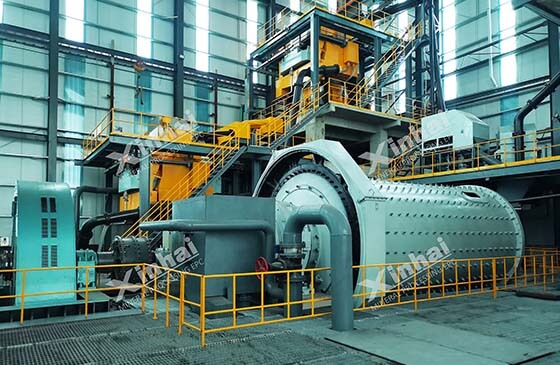
(Ball Mill in Actual Use)
03 How to Perform Ball Mill Maintenance
BackPerforming ball mill maintenance requires proper training, equipment, and procedures. Here are some of the steps that are required for ball mill maintenance:
1. Obtain the Proper Equipment
To perform ball mill maintenance, you will need the proper equipment, including safety gear, lubricants, and tools. The equipment required will vary depending on the specific maintenance task.
2. Follow Proper Procedures
Each maintenance task requires specific procedures to be followed. It is important to follow these procedures carefully to ensure that the maintenance is performed correctly and safely.
3. Document Maintenance Activities
It is important to document all maintenance activities, including inspections, repairs, and lubrication. Maintaining accurate recordscan help you track maintenance schedules, identify trends, and develop more effective maintenance strategies.
4. Train Maintenance Personnel
Proper training is essential for maintenance personnel to perform maintenance tasks safely and effectively. Training should cover equipment operation, safety procedures, and maintenance procedures.
4. Develop a Maintenance Schedule
A maintenance schedule should be developed to ensure that all maintenance tasks are performed at the appropriate intervals. The schedule should include tasks such as lubrication, inspection, cleaning, and alignment.
5. Monitor Equipment Performance
Monitoring equipment performance can help identify potential problems before they lead to breakdowns. Performance monitoring can include measuring vibration, temperature, and other indicators of equipment health.
6. Address Problems Promptly
If a problem is identified during maintenance or performance monitoring, it should be addressed promptly. This can help prevent the problem from getting worse and causing a breakdown.
7. Evaluate Maintenance Effectiveness
The effectiveness of maintenance should be evaluated regularly to ensure that maintenance tasks are achieving their intended goals. This can include evaluating equipment performance, maintenance costs, and downtime.
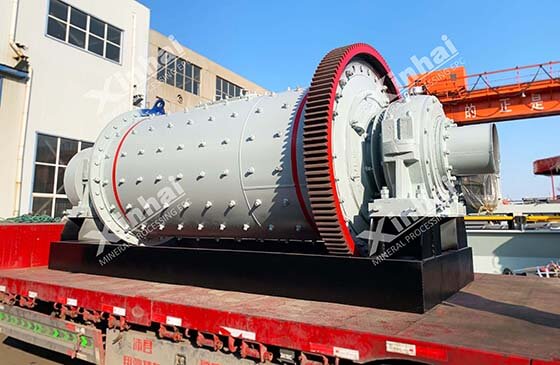
(Wet Overflow Ball Mill in the Factory)
04 Checklist for Ball Mill Maintenance
Backhere is a checklist for ball mill maintenance:
1. Lubrication
Check the lubrication system regularly for leaks and proper oil levels
Ensure that oil or grease is applied to all bearing surfaces
Check the oil quality and replace it if necessary
Ensure that the correct lubricant is used and applied according to the manufacturer's recommendations
2. Inspection
Inspect all components of the ball mill for signs of wear and damage
Check the gear teeth for wear, cracks, and other damage
Check the bearings for proper lubrication and signs of wear
Inspect the motor and gearbox for proper alignment and damage
Check the liners for wear and damage
3. Alignment
Check the alignment of the pinion and gear
Check the alignment of the motor and gearbox
Check the alignment of the trunnion bearings
Adjust the alignment as necessary
4. Cleaning
Clean the interior of the ball mill regularly to remove buildup and debris
Clean the exterior of the ball mill to prevent corrosion and damage
Use the appropriate cleaning methods and materials for the specific components of the ball mill
5. Vibration and Temperature
Monitor the vibration and temperature of the ball mill regularly
Use vibration analysis tools to identify potential problems
Measure the temperature of the bearings and motor regularly
Address any unusual vibration or temperature readings promptly
6. Electrical System
Check the electrical system regularly for proper grounding and connections
Check the wiring and cables for signs of wear and damage
Check the fuses and breakers for proper operation
Ensure that all electrical components are properly labeled and documented
7. Safety
Check the safety features of the ball mill, such as emergency stops and interlocks, regularly
Ensure that all safety guards and covers are in place and functioning properly
Provide proper training and personal protective equipment for maintenance personnel
8. Documentation
Keep accurate records of all maintenance activities, including inspections, repairs, and lubrication
Use a maintenance log to track maintenance schedules and tasks
Document any problems or issues that are identified during maintenance activities
05Conclusion
BackBall mill maintenance is essential for ensuring that the equipment performs at its best and has a long lifespan. Preventive maintenance tasks, such as lubrication, inspection, alignment, and cleaning, can help prevent breakdowns and improve performance. Reactive maintenance tasks, such as repairs, troubleshooting, and emergency maintenance, may be necessary in the event of a breakdown. Proper training, equipment, and procedures are essential for performing maintenance tasks safely and effectively. By following these guidelines, you can ensure that your ball mill operates at its best and meets production goals while minimizing downtime and repair costs.
We also have several articles about ball mill, they're What's the Price of Ball Mill; Factors that Affect Grinding Efficiency of Your Ball Mill; How to Install and Debug Ball Mill Correctly, please click the link to check them.
 +86 183 3575 8886
+86 183 3575 8886 pinklaurabao@gmail.com
pinklaurabao@gmail.com




 Message
Message Chat Now
Chat Now


